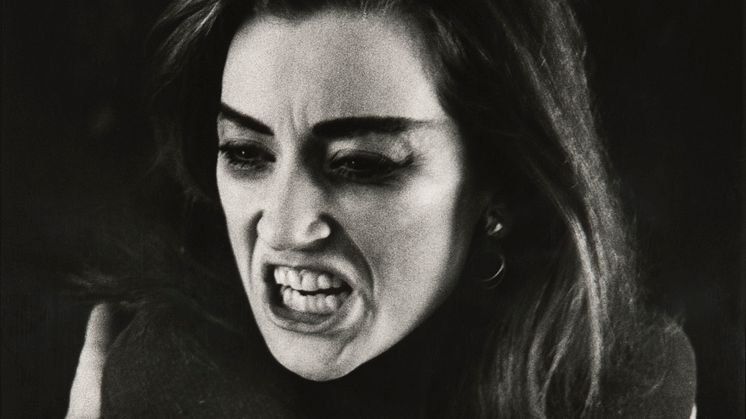
Press release -
New acquisition: Gertrud Fridh as Medea by Rolf Winquist
The Swedish National Portrait Gallery has added a photograph by Rolf Winquist of Gertrud Fridh in the role of Medea. It is one of the photographer’s most powerful portraits and dates from 1951. The acquisition is especially significant because it is the collection’s first work by Winquist.
The photographer Rolf Winquist (1910–68) was for many years the head of Ateljé Uggla, a popular studio in Stockholm. Known chiefly for its portraits, the showcase studio on Kungsgatan attracted professionals and amateurs alike. Generations of aspiring young photographers sought out Winquist. He did not provide formal instruction, preferring to give his students the opportunity to acquire knowledge and skills through practical tasks. The National Portrait Collection already includes works by notable photographers who worked at Ateljé Uggla, including Hans Hammarskiöld and Hans Gedda, but until now the collection lacked any works by Winquist. As such, the portrait of Gertrud Fridh is a particularly significant addition.
Winquist’s artistic roots were in the pictorialism movement of the early 20th century, which sought to elevate the status of photography and gain recognition as an art form. However, Winquist did not stop there, but went on to produce experimental works of a surrealist nature as well as street photography.
His depiction of the actress Gertrud Fridh, produced in 1951, is markedly different from the usual cold studio portrait. The tragic figure of Medea, a Greek princess who was deceived into killing her own children, is an intensely emotional role. In this portrait, Winquist succeeded in capturing Fridh’s characterization of Medea, with its combination of raging anger and unfathomable despair.
This photograph depicting Gertrud Fridh as the raging Medea, one of Rolf Winquist’s most powerful portraits, is a welcome addition that enhances the Swedish National Portrait Gallery. The acquisition was made possible by the generous support of the J.H. Scharp Foundation.
Further information
Eva-Lena Karlsson, Curator Collections and Swedish National Portrait Gallery
eva-lena.karlsson@nationalmuseum.se, +46 8 5195 4430
Hanna Tottmar, press officer, hanna.tottmar@nationalmuseum.se, +46 8 5195 4390
Press images
www.nationalmuseum.se/pressroom
Categories
Nationalmuseum is Sweden’s premier museum of art and design. The collections comprise older paintings, sculpture, drawings and graphic art, and applied art and design up to the present day. The museum building is currently under renovation and scheduled to open again in 2017. In the meantime, the museum will continue its activities through collaborations, touring exhibitions and a temporary venue at the Royal Swedish Academy of Fine Arts, Fredsgatan 12, Stockholm. Nationalmuseum collaborates with Svenska Dagbladet, Fältman & Malmén and Grand Hôtel Stockholm. For more information visit www.nationalmuseum.se.

